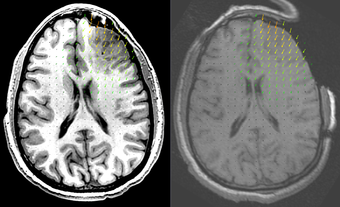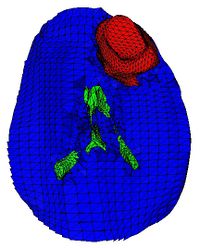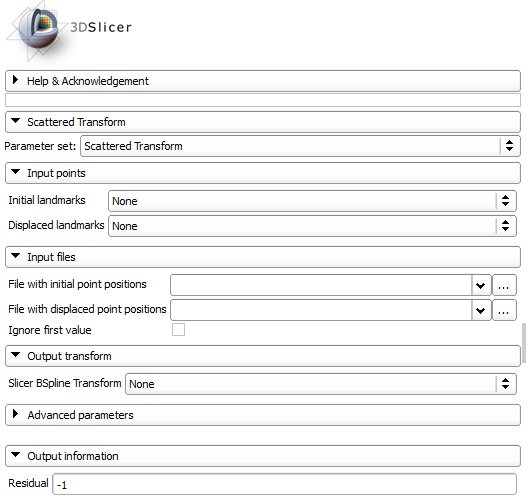Difference between revisions of "Documentation/Nightly/Extensions/ScatteredTransform"
Grandwork2 (talk | contribs) |
Grandwork2 (talk | contribs) |
||
| Line 39: | Line 39: | ||
{| | {| | ||
| | | | ||
| − | |[[Image:ScatteredTransform_panel.png|thumb| | + | |[[Image:ScatteredTransform_panel.png|thumb|560px|Module UI]] |
|} | |} | ||
Revision as of 04:57, 3 March 2017
Home < Documentation < Nightly < Extensions < ScatteredTransform
|
For the latest Slicer documentation, visit the read-the-docs. |
Introduction and Acknowledgements
|
Extension: ScatteredTransform |
Module Description
Creates a BSpline transform from a displacement field defined at scattered points by using the Multi-level BSpline interpolation algorithm.
Use Cases
1. Create a B-Spline transform based on two sets of fiducials.
2. Create a B-Spline transform based on two sets of points read from files. These files can contain the initial and deform configurations for a biomechanics-based FEM or mesh-free registration. The resulting B-Spline transform can be used to warp 3D images, a process which is very time consuming if spatial interpolation is performed using the mesh [1].
Panels and their use
References
1. Joldes GR, Wittek A, Warfield SK, Miller K (2012) "Performing Brain Image Warping Using the Deformation Field Predicted by a Biomechanical Model." In: Nielsen PMF, Miller K, Wittek A, editors. Computational Biomechanics for Medicine: Deformation and Flow: Springer New York. pp. 89-96.


